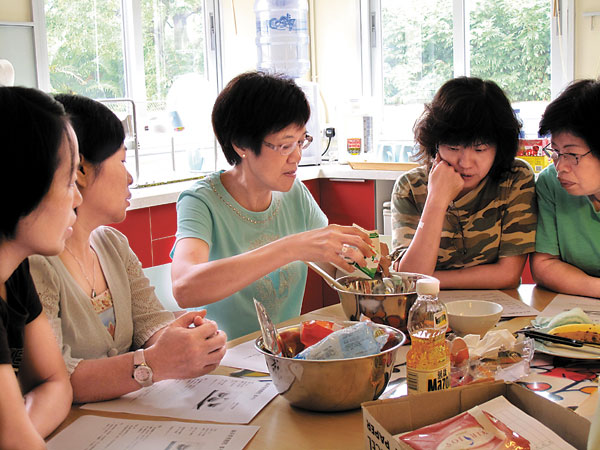Center of hope and support
 |
|
Maggie's Cancer Caring Centre in Hong Kong helps patients through a variety of sessions, like yoga, nutrition and makeup classes. Photos provided to China Daily |
"Most hospital environments say to the patient, in effect: 'How you feel is unimportant'," wrote Jencks. "'You are not of value. Fit in with us, not us with you'. With very little effort and money, this could be changed to something like: 'Welcome! And don't worry. We are here to reassure you, and your treatment will be good and helpful to you'. Why shouldn't the patient look forward to a day at the hospital?"
Jencks worked with Edinburgh architect Richard Murphy to convert a small building within Edinburgh's Western General Hospital's grounds into a drop-in center.
It was intended to be an uplifting place housed in transformative architecture. Patients and their family or caregivers could source information about the disease and alternative treatments, participate in group programs and counseling sessions, share experiences with like-minded people or have a quiet place to reflect.
It was a plan to help patients help themselves. The sick can take ownership for how they wish to continue living with the disease.
Jencks died in 1995, a year before the first Maggie's Cancer Caring Centre was open to the public.
Nearly two decades later, Jencks' friend and architect Frank Gehry unveiled his second Maggie's in Hong Kong.
The single story, purpose-built structure is situated near the grounds of Tuen Mun Public Hospital, allowing patients to drop by as they wait for their treatment session or doctor's appointment.
Hong Kong has a total population of more than 7 million. Tuen Mun Hospital's catchment area is about 15 percent of that, or roughly 1.1 million people. Newly diagnosed cancer cases in the city were about 26,000 in 2011, with approximately 10 percent of that is in the Tuen Mun and New Territories West area.
Gehry worked with local architect Ronald Lu & Partners on the project pro bono. Jencks' daughter Lily designed the landscape around the building.

















